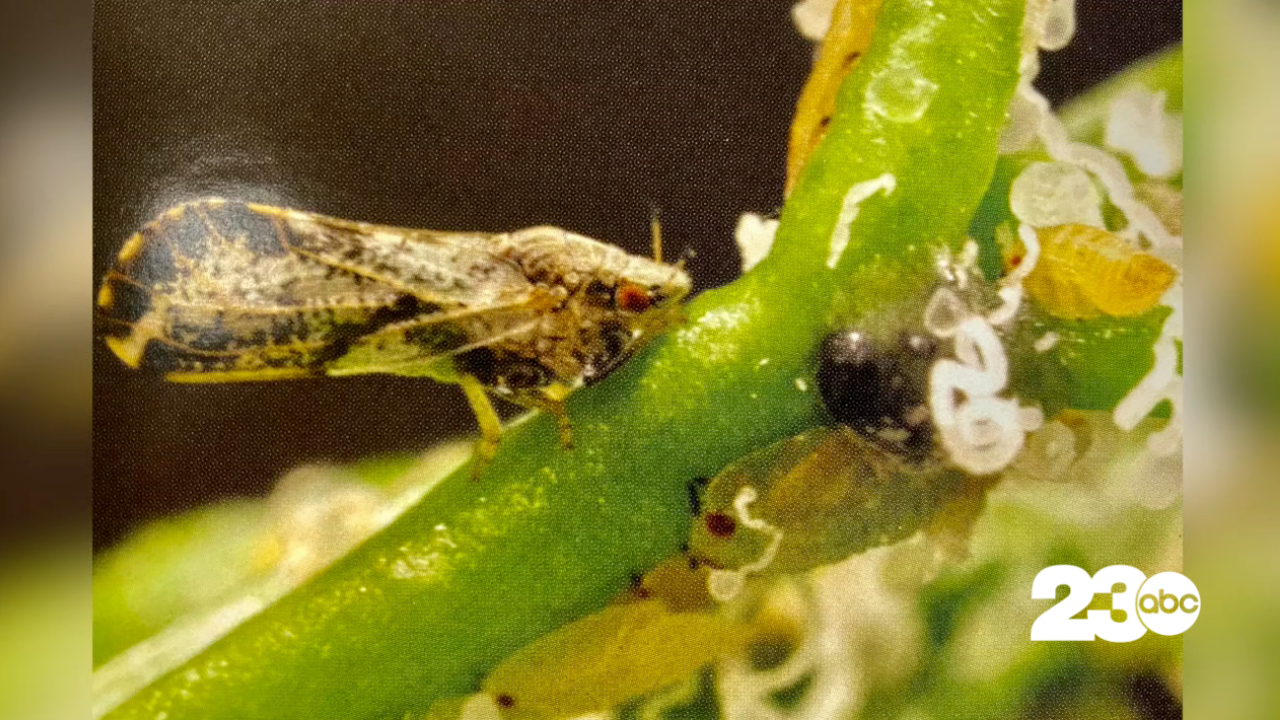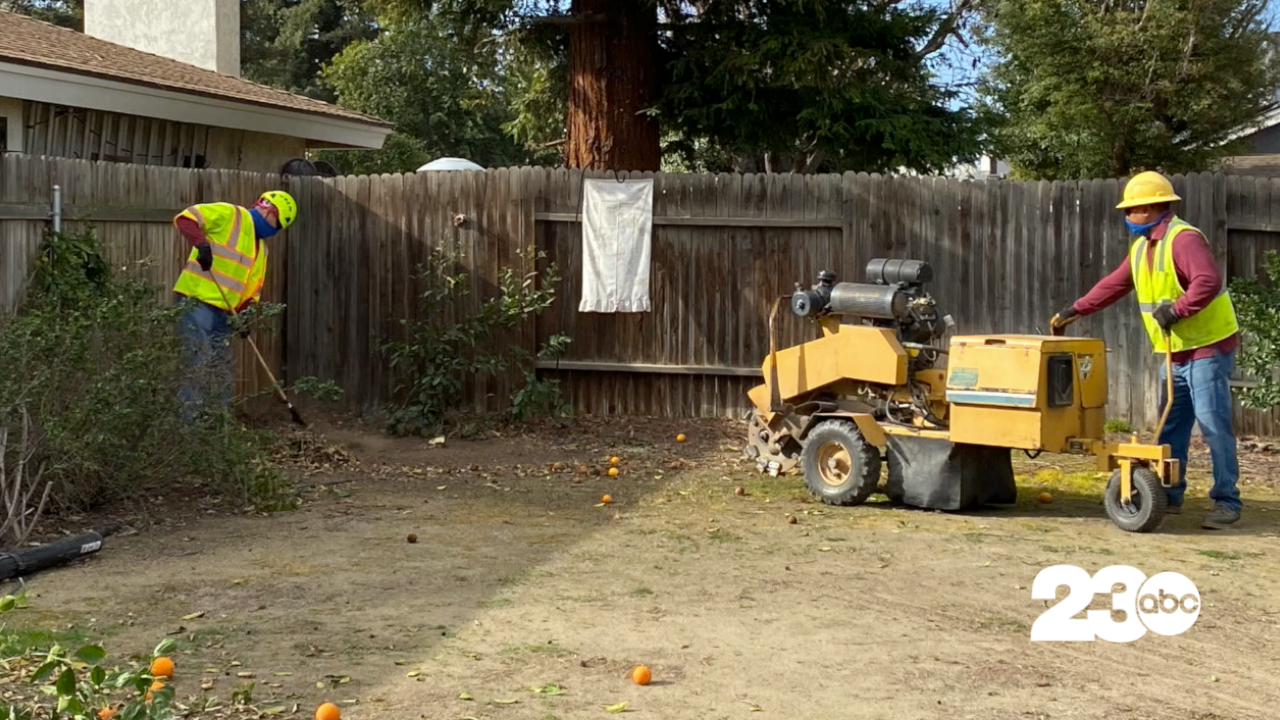BAKERSFIELD, Calif. (KERO) — The fruits and vegetables grown in the Central Valley account for a large share of what's consumed across the U.S., but it’s our local citrus fields that depends on the community's help to keep the crops growing.
If not properly sprayed with pesticides something as simple as an orange tree can be harmful, not only to our residential areas but also our prized agricultural crops.
“We’re trying to prevent it from coming over here due to Bakersfield being very big in agriculture and citrus. We don’t want that disease to come here,” said Blanca Lara, Program Coordinator for Kern County Citrus Pest Control.

Huanglongbing, also known as HLB, a tree-killing bacteria that can be carried by a pest called Asian Citrus Psyllids and can spread rapidly within citrus trees.
Blanca Lara says it's the most devastating disease of citrus in the world. “In our fields, we’re not finding this bug but in our residential areas, we do find the bug due to them not spraying like the orchards.”
While they haven’t detected HLB in Kern County, the Asian Citrus Psyllids have been detected.
“Unfortunately, when it gets in the trees [it] can infect and spread right away. There’s no curing it, it will basically just start to spread in the area where it’s been found. It would hit a tree next door to you and so on. That’s when the state would come in and have you remove it at your own cost.”

Instead of costing you money, the Kern County Pest Control District wants to pay you. The department created a prevention program to put forth their efforts in keeping the residential areas and fields in Kern County as safe as possible.
“We offer an incentive to our homeowners and it’s all voluntary, you don’t have to but if you’d like, we pay you $50 per tree and the removal cost is also free to homeowners and it’s paid by the Kern County Citrus Pest Control District,” said Lara.
For residents who would like to keep their citrus trees, the Kern County Pest Control District encourages you to spray the trees every three months in order to keep the pest away.
23ABC In-Depth
What is Huanglongbing (HLB or Citrus Greening)?
The Situation: Citrus huanglongbing (HLB), previously called citrus greening disease, is one of the most destructive diseases of citrus worldwide. Originally thought to be caused by a virus, it is now known to be caused by unculturable phloem-limited bacteria. There are three forms of greening that have been described. The African form produces symptoms only under cool conditions and is transmitted by the African citrus psyllid Trioza erytreae, while the Asian form prefers warmer conditions and is transmitted by the Asian citrus psyllidDiaphorina citri. Recently a third American form transmitted by the Asian citrus psyllid was discovered in Brazil. This American form of the disease apparently originated in China. In North America, the psyllid vector, Diaphorina citri, of HLB is found in Florida, Louisiana, Georgia, South Carolina, Texas and Hawaii, and recently arrived in Southern California from Mexico. HLB is known to occur in Florida Lousiana, South Carolina, Georgia, Cuba, Belize and the Eastern Yucatan of Mexico. A federal quarantine restricts all movement of citrus and other plants in the family Rutaceae from Asian Citrus Psyllid or HLB-infested areas into California in order to prevent introduction of the disease.
Damage: The HLB bacteria can infect most citrus cultivars, species and hybrids and even some citrus relatives. Leaves of newly infected trees develop a blotchy mottle appearance. On chronically infected trees, the leaves are small and exhibit asymmetrical blotchy mottling (in contrast to Zinc deficiency that causes symmetrical blotching). Fruit from HLB-infected trees are small, lopsided, poorly colored, and contain aborted seeds. The juice from affected fruit is low in soluble solids, high in acids and abnormally bitter. The fruit retains its green color at the navel end when mature, which is the reason for the common name "citrus greening disease." This fruit is of no value because of poor size and quality. There is no cure for the disease and rapid tree removal is critical for prevention of spread.




